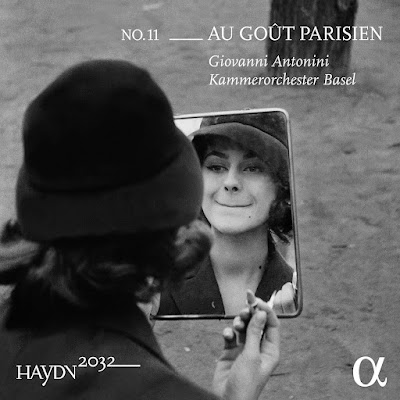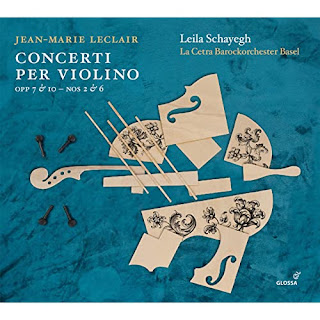Michael Haydn: Violin and Flute Concertos
I've never warmed to Michael Haydn, who I always connect in my mind with Fredo Corleone from The Godfather 2. In the shadow of his older brother Franz Joseph, he always seems to underperform what one might hope for, considering his bloodline and the obvious advantages he must have had. So, seeing this new disc from a group which I really admire, the Capella Savaria from Hungary, under Zsolt Kalló, who also plays the solo violin (the flutist is Andrea Bertalan), I set aside my prejudices, and tried to give Michael Haydn a chance.
In his wonderful liner notes to a disc of music by Luigi Boccherini that I recently reviewed, Emilio Moreno says,
"His musical language is possessed of a 'recognisably unidentifiable' quality, that Ciceronian 'nescio quid' to which his Enlightenment era contemporaries would always describe by employing the hackneyed 'no sé qué', when owning up to their inability to define the experience, within the limits of the expressible, of the beauty, loftiness, ease, sprezzatura, lightness, spirit and inventiveness which all seem to come together in the semantic range of the 'je ne sais quoi' and 'non so che' of philosophers and aesthetes when they wanted to explain the music of the brilliant and distinctive, often misunderstood, outsider who was 'Don Luis Boquerini'."
It's this 'no sé qué' that I've almost always found missing in Michael Haydn's music. And the mid-18th Century was a particularly dangerous time to do without a special sauce, since the galant schemas of the time were so strong and universal across European music. Without it there are only a series of hackneyed devices strung together in hackneyed ways.
I'm pleased to report that I did discover that 'no sé qué' in this album, though not where I expected it. The mature Violin Concerto in A major, probably written in 1776, is a decent piece of music, sounding more like Mozart than brother Franz Joseph. But even though there are some fine melodies the piece never takes off. Neither do the two Flute Concertos, both from around the same time. I hasten to say that this is not the fault of the excellent soloists, the orchestral players, the conductor, or indeed of the Hungaroton producer or engineers. I can't imagine more vital performances of this music, but the fact remains that these three concertos are all rather pedestrian.
It's the earliest work on the disc that impressed me the most: the Violin Concerto in G major, probably from 1764. This music is so strong that it was once mistaken for Joseph Haydn - a common enough situation at the time, to be sure, since Franz Joseph's musical brand was the most important in Europe. I believe that the big brother would have been proud if he had heard this music, especially played as well as it is here. Beauty: check, loftiness: check, ease: check, sprezzatura: check, lightness: check, spirit: check and inventiveness: check. Mozart would probably add a final quality: taste. I think we can check that one off as well.
Good work, Fredo!
Here is the first movement of the G major Violin Concerto:






















